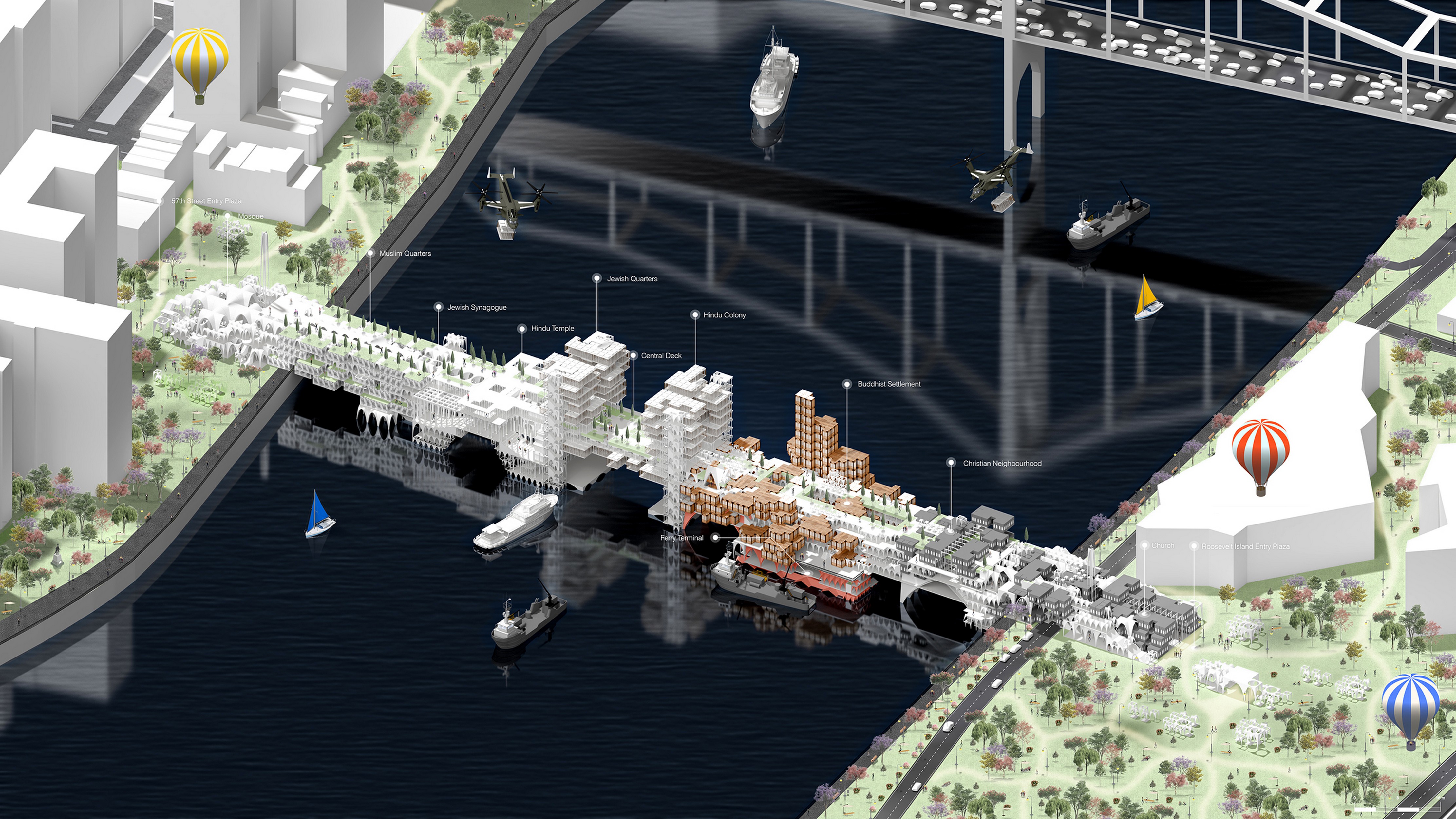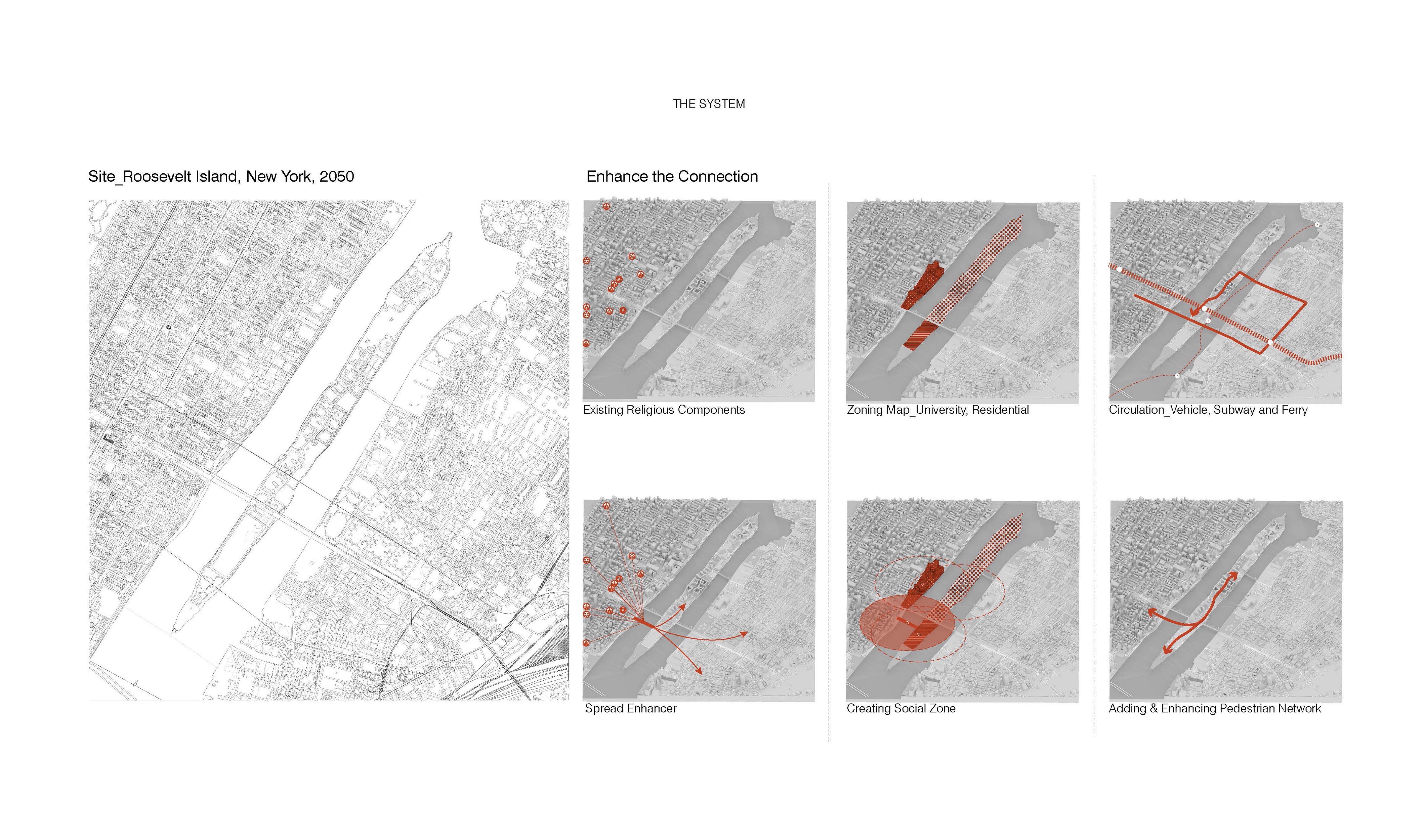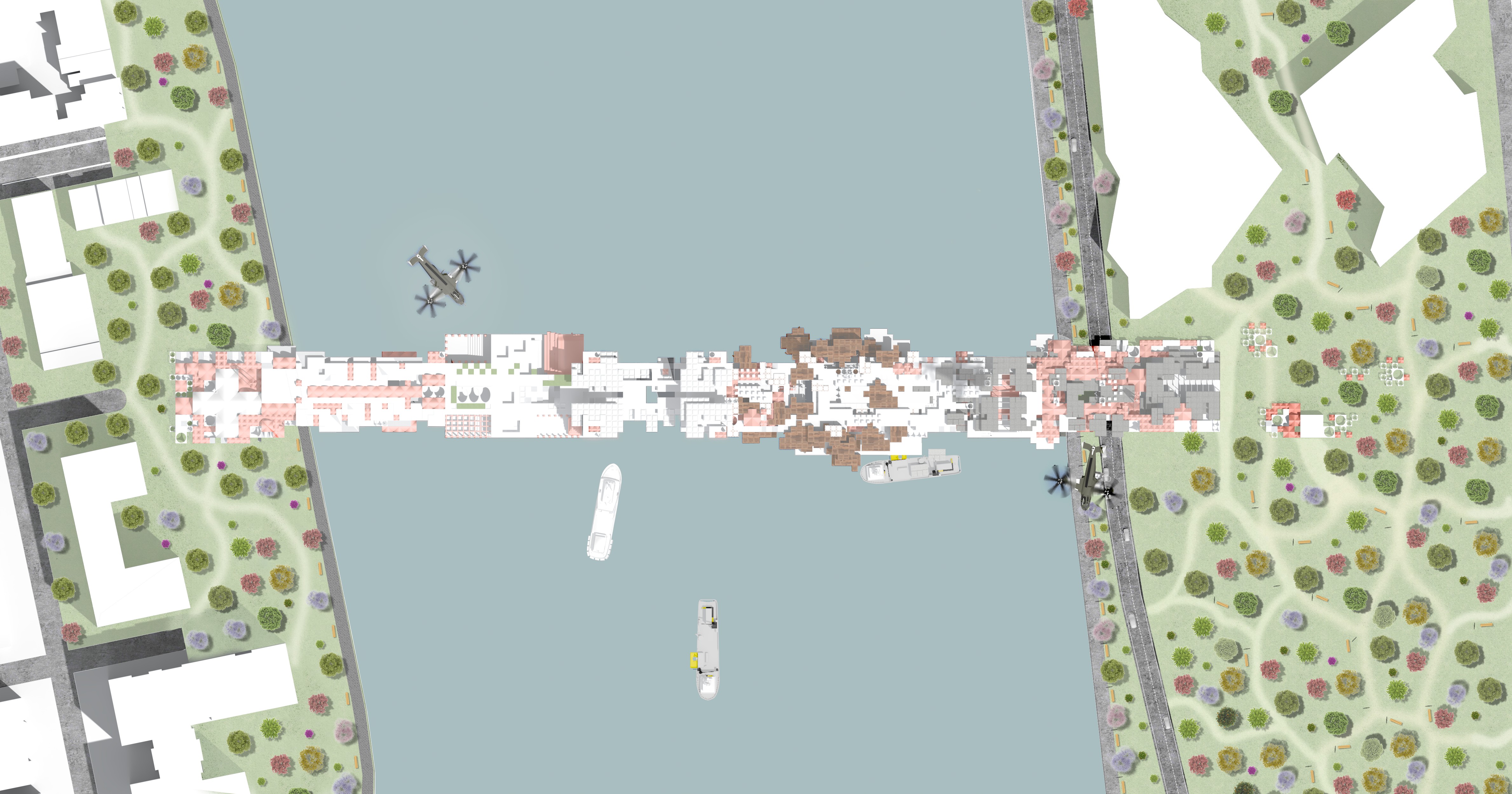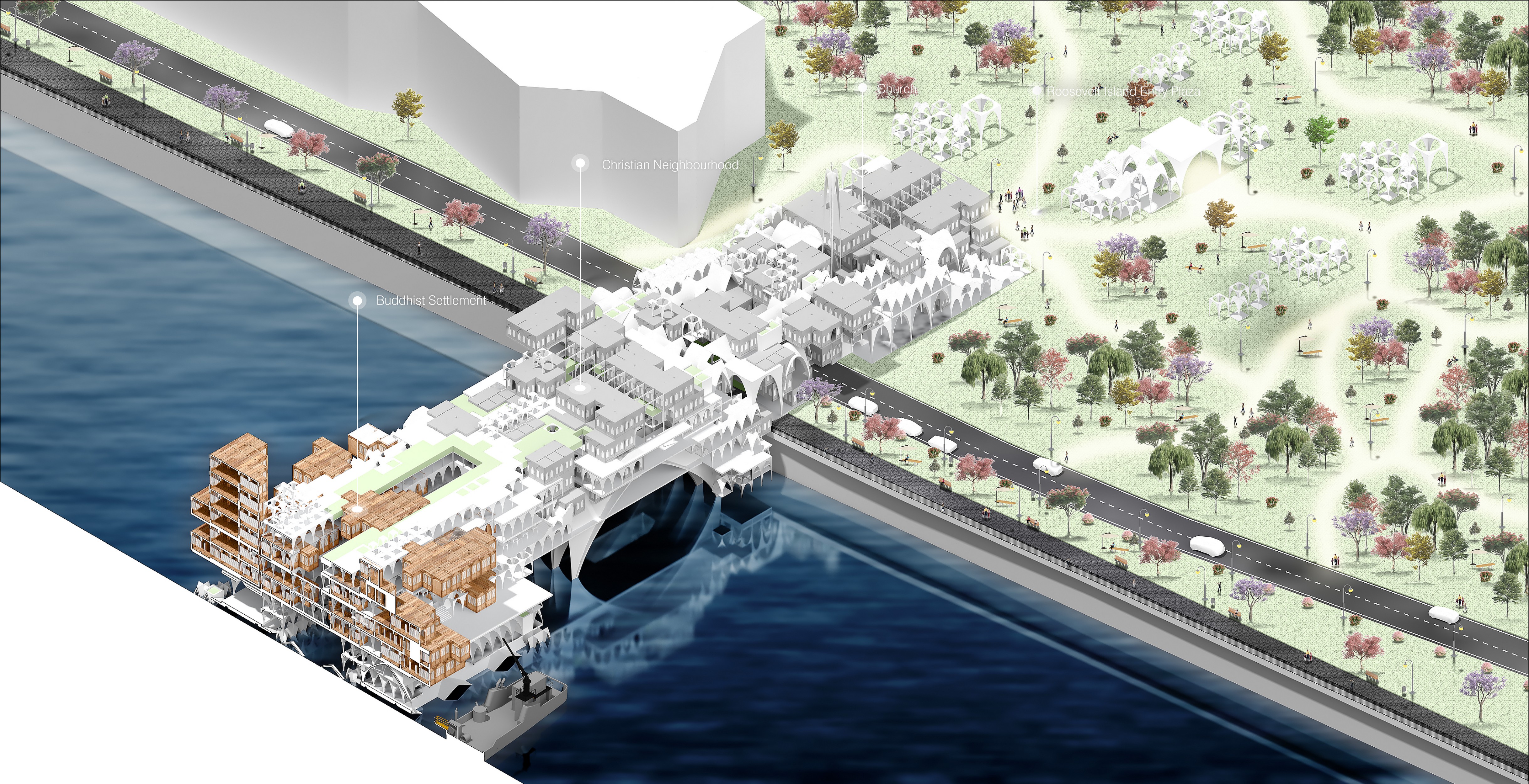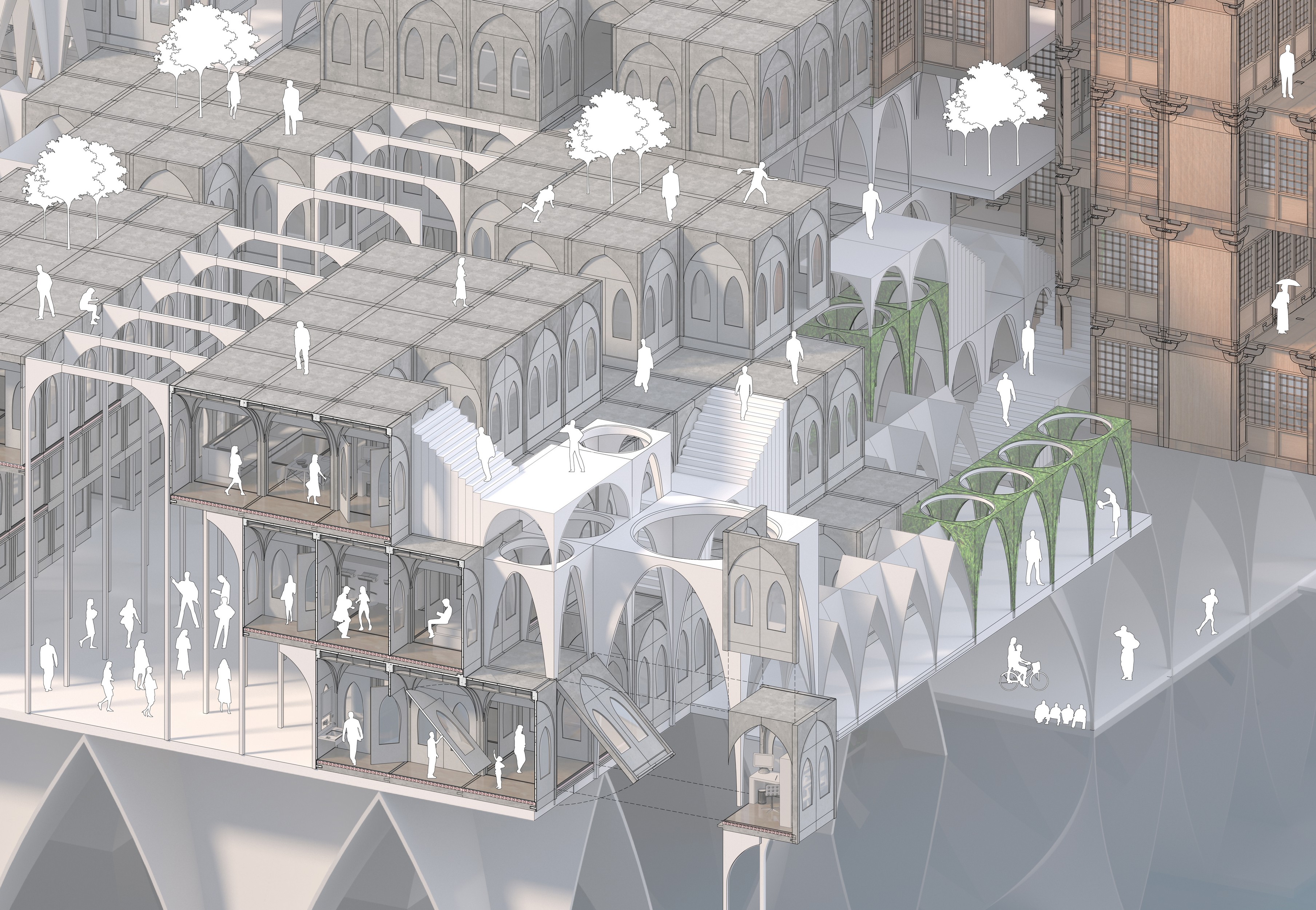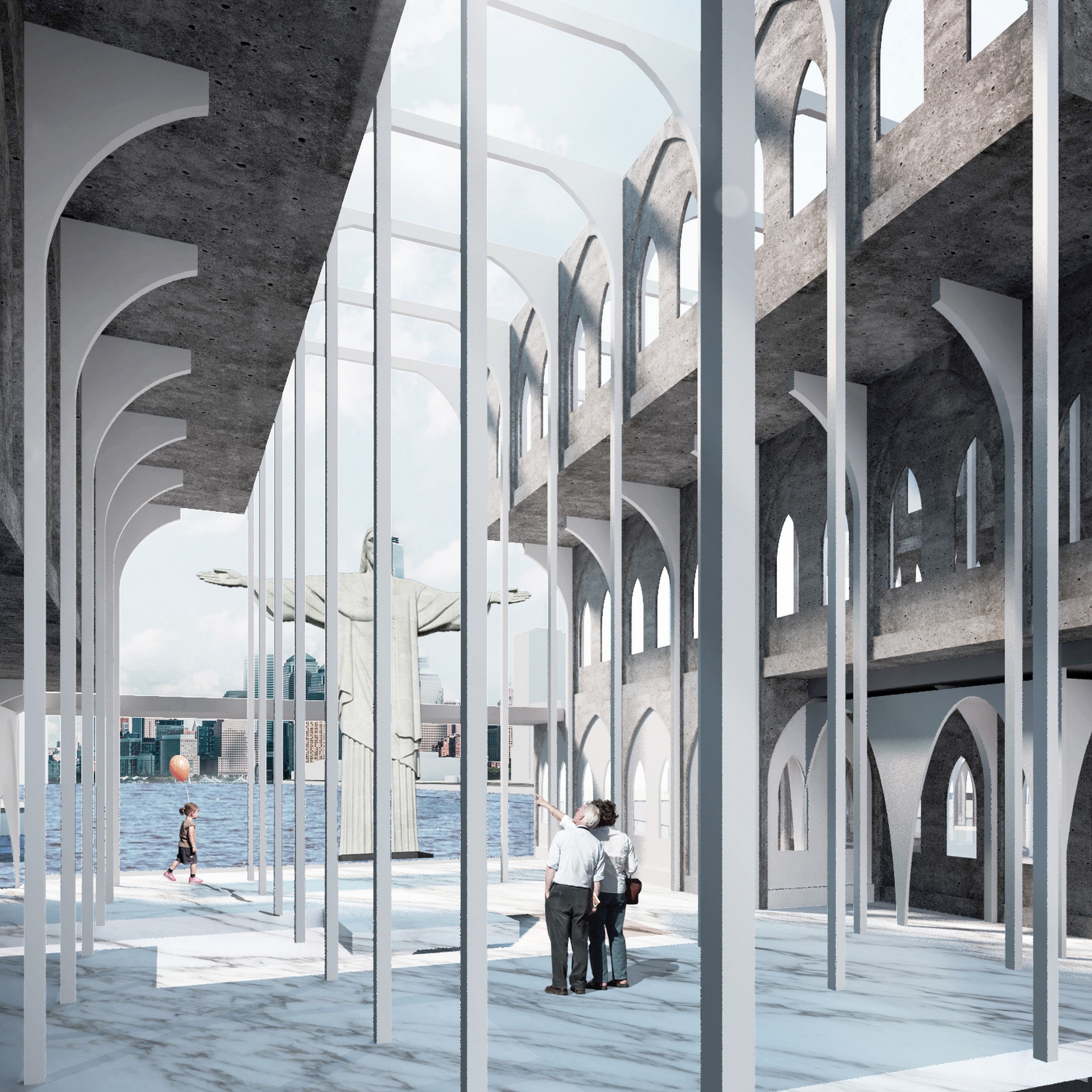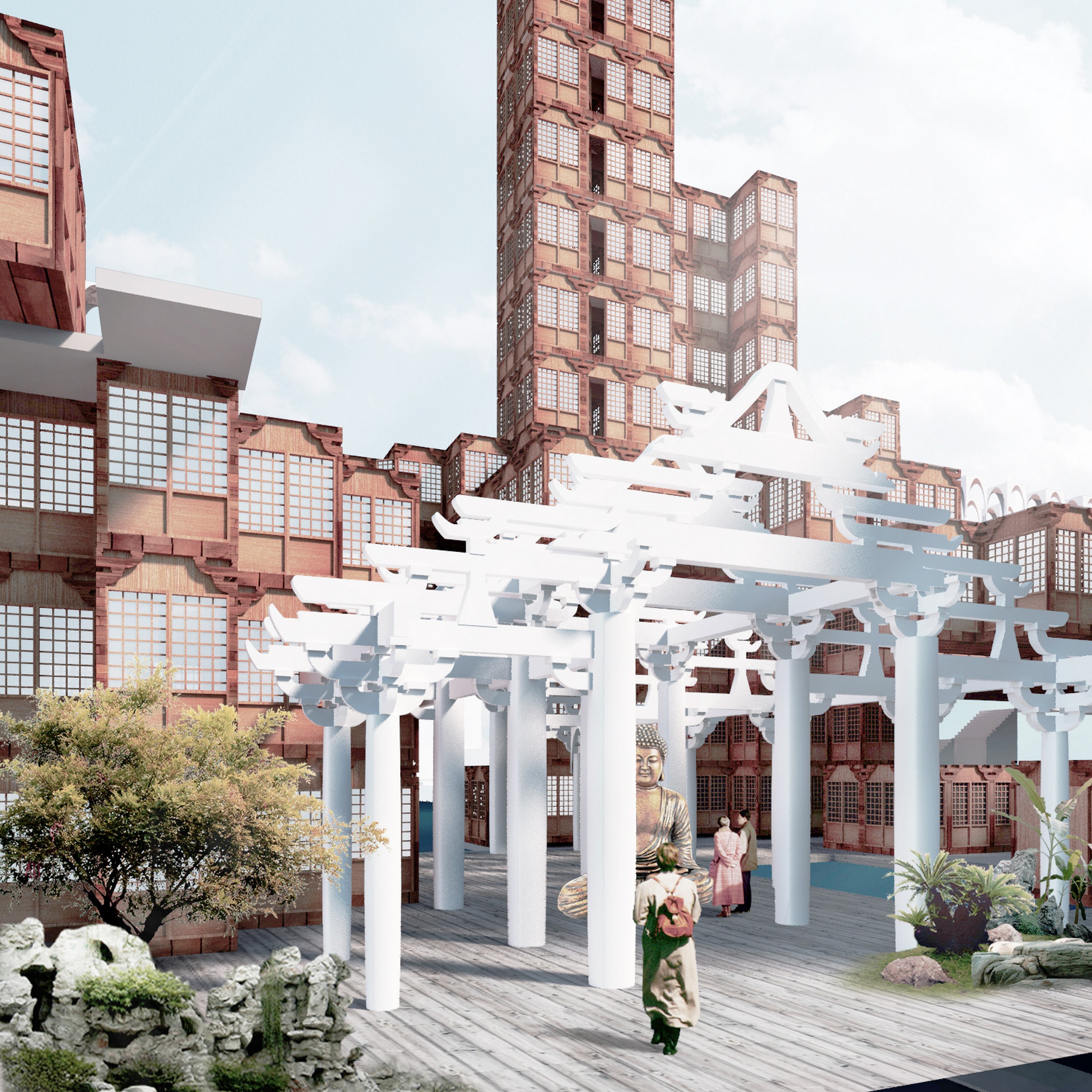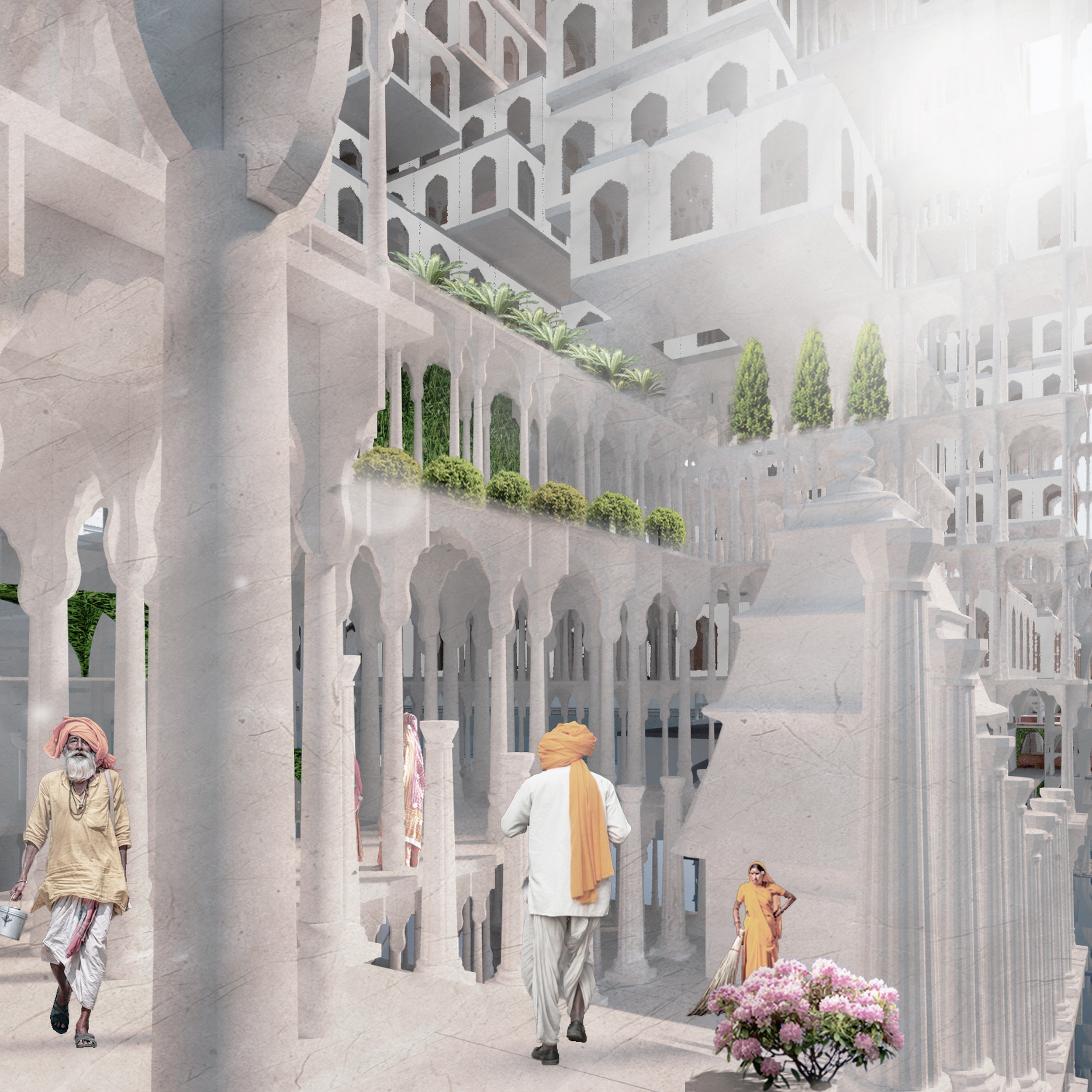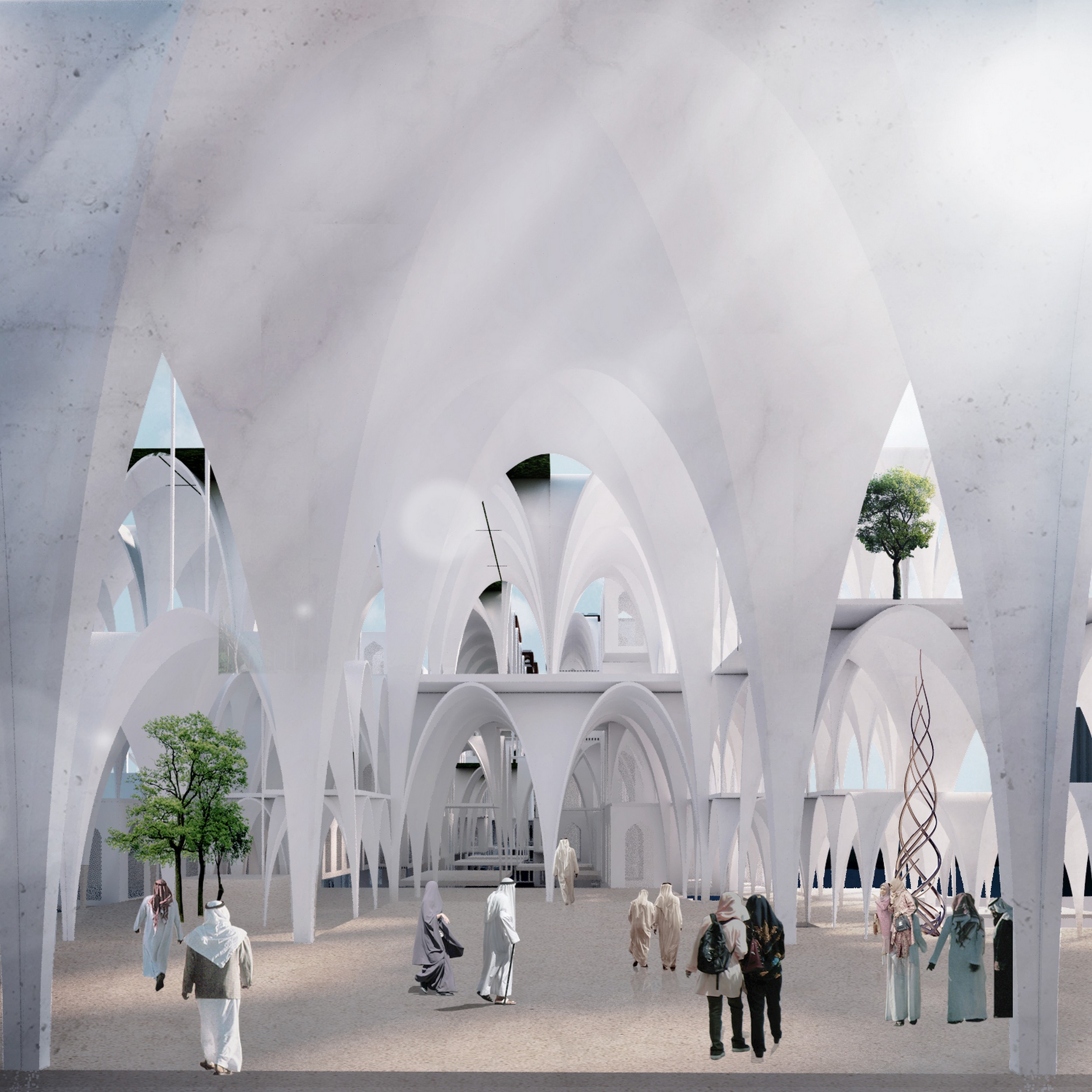City on a Bridge 2.0
In the year 2050, A new world order comes in to effect, where Theocracy gains control over the world. The governor of New York decides to build a new housing community as a symbol of liberation and acceptance of a new theocratic society that gives equal importance to all the religions of the world. At the same time New York city is witnessing a housing crisis, the city’s new policy to have more public open and green spaces has resulted in lack of land availability, the only option left to the city is to use the air space above the rivers by constructing bridges. The Theocratic society of New York decides to construct a pluralistic bridge representing all the important faiths of the world. A symbolic gesture to unite the world and represent the true spirit of the United Nations.
The bridge represents four important religions of the world Christianity, Islam, Buddhism and Hinduism. The bridge is constructed using modular units, each unit representing the archetype of the religion the user believes in. The Bridge organizes itself in to four communal zones, a reflection of intrinsic nature of human being to form social groups based on common association. Free will and freedom of religion results in formation of hybrid units where a member of the household might believe in different religion. And the modular system allows for such hybrid system to co-exist with in the complex matrix of the bridge.
Cornell University Architecture, Art and Planning
Faculty: Andreas Tjeldflaat
Team: Seung Won Seo, Mohammed Mansoor
Degree: M.S. Advanced Architectural Design
Semester: Fall 2018
Duration: Aug 2018 to Dec 2018
Software: Rhino, Vray, Photoshop, Illustrator
Site : Roosevelt Island, New York, NY
Type : Architecture + Infrastructural symbiosis, Modular Housing, Modularity, Religious Ornamentation.
The bridge represents four important religions of the world Christianity, Islam, Buddhism and Hinduism. The bridge is constructed using modular units, each unit representing the archetype of the religion the user believes in. The Bridge organizes itself in to four communal zones, a reflection of intrinsic nature of human being to form social groups based on common association. Free will and freedom of religion results in formation of hybrid units where a member of the household might believe in different religion. And the modular system allows for such hybrid system to co-exist with in the complex matrix of the bridge.
Cornell University Architecture, Art and Planning
Faculty: Andreas Tjeldflaat
Team: Seung Won Seo, Mohammed Mansoor
Degree: M.S. Advanced Architectural Design
Semester: Fall 2018
Duration: Aug 2018 to Dec 2018
Software: Rhino, Vray, Photoshop, Illustrator
Site : Roosevelt Island, New York, NY
Type : Architecture + Infrastructural symbiosis, Modular Housing, Modularity, Religious Ornamentation.
